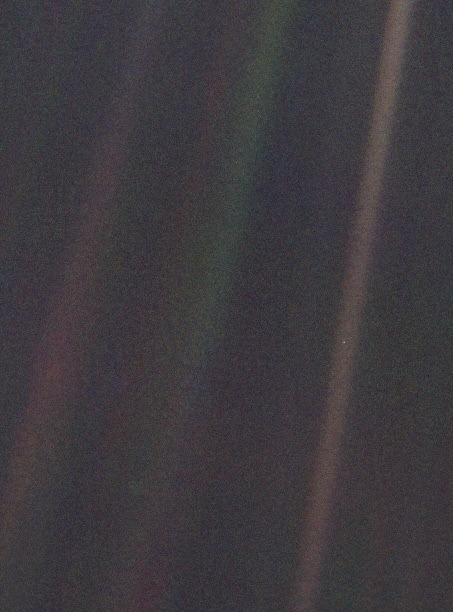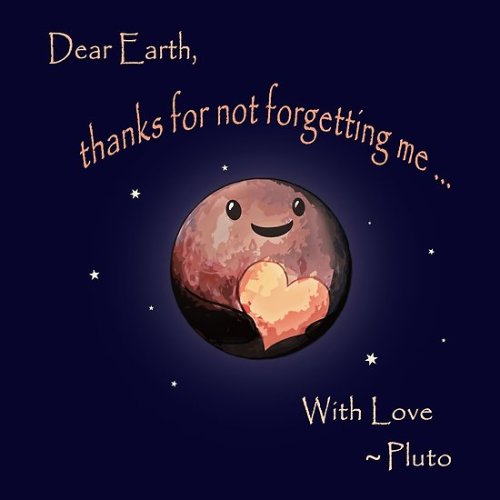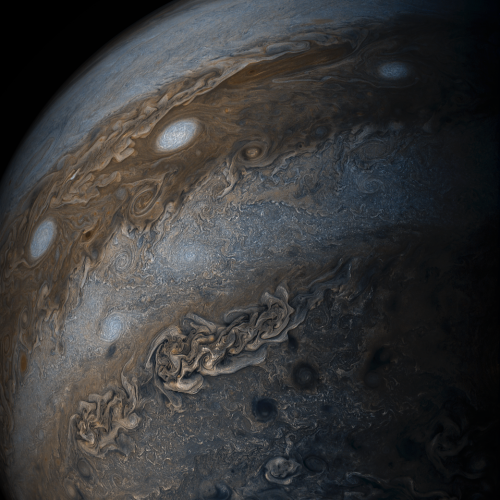The Luminous Heart Of The Galaxy M61.

The luminous heart of the galaxy M61.
More Posts from Starlost and Others
Bad: aliens that insist upon referring to human women as “feeeeemales”.
Good: aliens that insist upon dividing humans into binary categories, but the binary in question is based on something we’d regard as trivial and bizarre.







"Voyager 1 entered interstellar space on Aug. 1, 2012, and continues to collect data, now nearly 14 billion miles away from Earth." -https://spacecenter.org/
X-Files, "Little Green Men" // NASA image of Voyager probe // Jimmy Carter's Golden Record greeting // Carl Sagan // Star Trek TNG, "Pen Pals" // NASA image "Pale Blue Dot" // CJ Cherryh, "Pots"
Astronaut tweets






























The qrcodes do take to each planets' nasa site. I learned a lot of each planet while doing this work.
My favorite is Saturn! Which ones yer favorite?
Something to think about that we don't usually think about
You actually can’t see light. You can only see what light hits.

Happy Valentines day: source
what if...................... i was chilling............ and then a tumblr infographic said only 8% of all the planets that will ever exist have already been formed and earth is one of them there are 92% more planets to exist we're not alone we're just first we're not alone we're just early if the entire universe was 100 planets we would be in the first eight and the other ninety-two don't exist yet new planets will be born as ours becomes a faded memory to the vast expanse of the universe we're not alone we're just early our entire existence is a smear on the windscreen of the cosmos the universe is unimaginably big but unimaginably small compared to what it will be we're not alone we won't be alone we're just early

Jupiter’s Bands of Clouds
This enhanced-color image of Jupiter’s bands of light and dark clouds was created by citizen scientists Gerald Eichstädt and Seán Doran using data from the JunoCam imager on NASA’s Juno spacecraft.
Three of the white oval storms known as the “String of Pearls” are visible near the top of the image. Each of the alternating light and dark atmospheric bands in this image is wider than Earth, and each rages around Jupiter at hundreds of miles (kilometers) per hour. The lighter areas are regions where gas is rising, and the darker bands are regions where gas is sinking.
Credits: NASA/JPL-Caltech/SwRI/MSSS/Gerald Eichstädt /Seán Doran










Planet Earth, April 16, 1972, as seen from the Apollo 16 spacecraft as it journeyed toward the Moon. (NASA)
-
 jumpshadow reblogged this · 7 months ago
jumpshadow reblogged this · 7 months ago -
 jumpshadow liked this · 7 months ago
jumpshadow liked this · 7 months ago -
 poryog liked this · 1 year ago
poryog liked this · 1 year ago -
 deathranch liked this · 1 year ago
deathranch liked this · 1 year ago -
 demigodoreo reblogged this · 1 year ago
demigodoreo reblogged this · 1 year ago -
 guera602ws liked this · 2 years ago
guera602ws liked this · 2 years ago -
 oflgtfol reblogged this · 2 years ago
oflgtfol reblogged this · 2 years ago -
 oflgtfol liked this · 2 years ago
oflgtfol liked this · 2 years ago -
 lizard-spams-your-dash-too liked this · 2 years ago
lizard-spams-your-dash-too liked this · 2 years ago -
 featherlilacmotherfucker liked this · 2 years ago
featherlilacmotherfucker liked this · 2 years ago -
 neuters reblogged this · 2 years ago
neuters reblogged this · 2 years ago -
 rsfz-rennane liked this · 2 years ago
rsfz-rennane liked this · 2 years ago -
 joshocatboy reblogged this · 2 years ago
joshocatboy reblogged this · 2 years ago -
 joshocatboy liked this · 2 years ago
joshocatboy liked this · 2 years ago -
 sketchywerewolf liked this · 2 years ago
sketchywerewolf liked this · 2 years ago -
 startrekvsfaceapp liked this · 2 years ago
startrekvsfaceapp liked this · 2 years ago -
 hc1701 reblogged this · 2 years ago
hc1701 reblogged this · 2 years ago -
 hc1701 liked this · 2 years ago
hc1701 liked this · 2 years ago -
 braziltwinkx liked this · 2 years ago
braziltwinkx liked this · 2 years ago -
 pipuisci reblogged this · 2 years ago
pipuisci reblogged this · 2 years ago -
 pipius liked this · 2 years ago
pipius liked this · 2 years ago -
 kmdn22 liked this · 2 years ago
kmdn22 liked this · 2 years ago -
 k-llewellin-novelist reblogged this · 2 years ago
k-llewellin-novelist reblogged this · 2 years ago -
 skati-fjolnirsbur reblogged this · 2 years ago
skati-fjolnirsbur reblogged this · 2 years ago -
 ahremane reblogged this · 2 years ago
ahremane reblogged this · 2 years ago -
 justclownin liked this · 2 years ago
justclownin liked this · 2 years ago -
 inanna-76 reblogged this · 2 years ago
inanna-76 reblogged this · 2 years ago -
 sheliesshattered reblogged this · 2 years ago
sheliesshattered reblogged this · 2 years ago -
 skati-fjolnirsbur liked this · 2 years ago
skati-fjolnirsbur liked this · 2 years ago -
 sad-girl-poetry reblogged this · 2 years ago
sad-girl-poetry reblogged this · 2 years ago -
 brandon1997 liked this · 2 years ago
brandon1997 liked this · 2 years ago -
 sedgeleaf reblogged this · 2 years ago
sedgeleaf reblogged this · 2 years ago -
 toucansafari liked this · 2 years ago
toucansafari liked this · 2 years ago -
 anairbri reblogged this · 2 years ago
anairbri reblogged this · 2 years ago -
 anairbri liked this · 2 years ago
anairbri liked this · 2 years ago

andrei, he/him, 21, made this at 14 when i was a space nerd but i never fully grew out of that phase so,,,,..,hubble telescope + alien life + exoplanet + sci fi nerd
245 posts